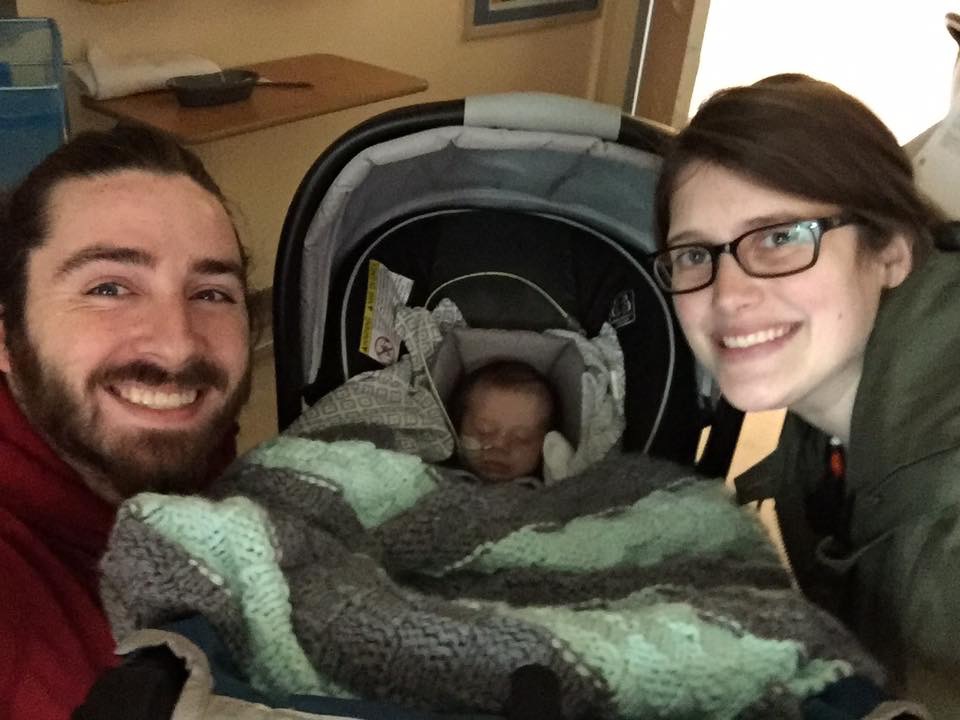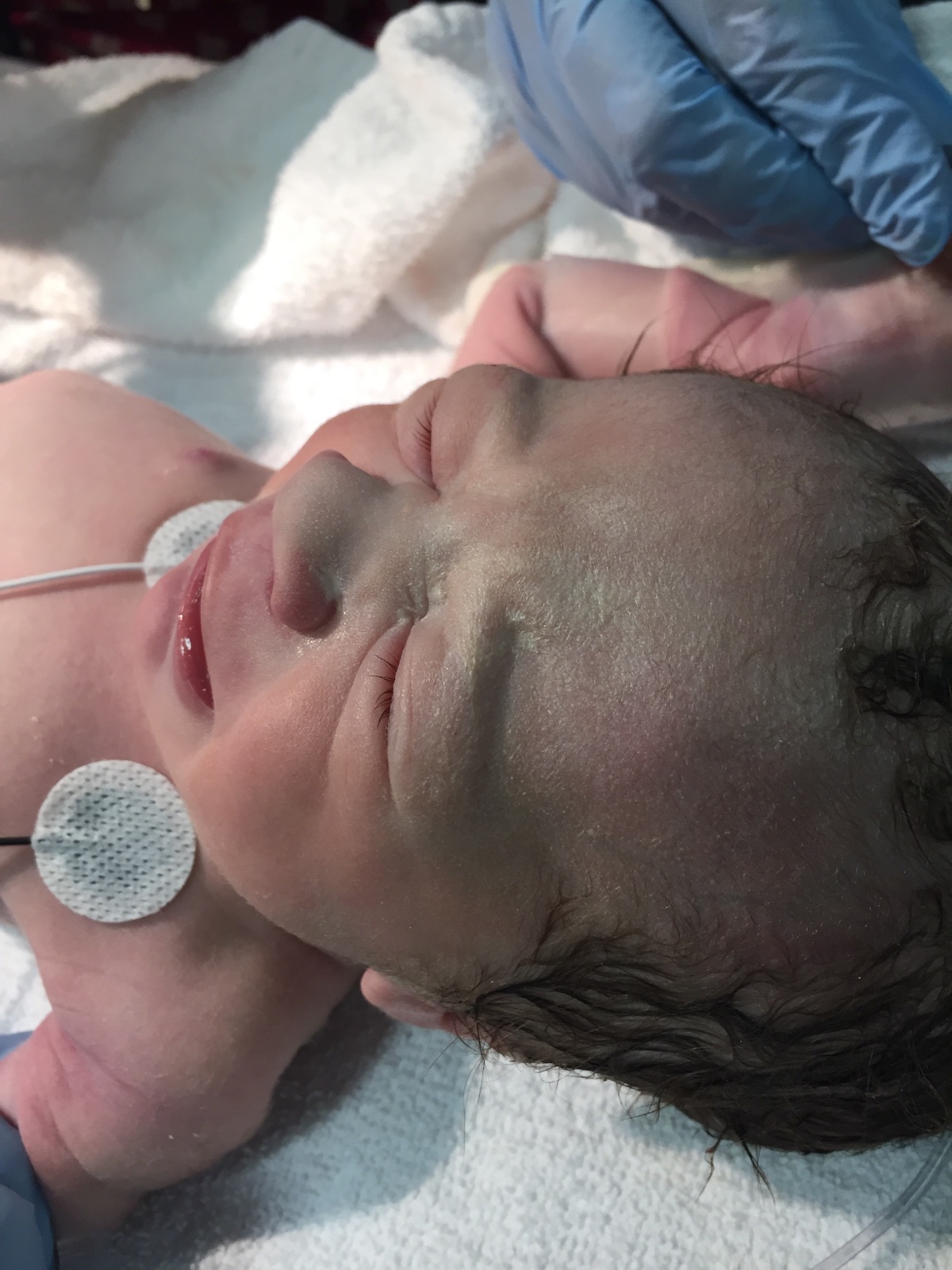When baby Sebastian Havill entered the world, he’d already had two surgeries — one done on the tiny infant’s beating heart while he was still in his mother’s womb.

The procedure, called a Balloon Atrial Septoplasty, or BAS, was performed to treat Sebastian’s specific heart defects. It was done by Canada’s own Hospital for Sick Children and Mount Sinai Hospital in Toronto just five days before he was born.
WATCH: Dr. Greg Ryan talks about the agonizing and brave decision the parents of baby Sebastian made when they agreed to a procedure never tried before for this particular heart condition.

And after birth, the brave newborn had open-heart surgery. In all, he’s pulled through more major medical procedures than most people encounter in a lifetime.
READ MORE: 8 medical breakthroughs Canadians should be proud of
Baby Sebastian had a congenital heart defect called TGA or transposition of the great arteries. His cardiac arteries were inverted – the artery that funnels oxygenated blood to the brain and body, and the artery that brings blood to the lungs, were swapped.
In addition to TGA, all the walls in his heart were closed shut, preventing his blood from mixing and getting out to his brain and the rest of the body.
The little guy’s condition is rare, affecting only about five to seven per cent of babies with congenital heart defects. Doctors realized they needed to create a hole in his heart to allow mixing and healthy blood flow. Then they needed to carry out an arterial switch.
His mom, Kristine Barry, knew something was wrong when she went in for her 20-week ultrasound.
The ultrasound tech went over Sebastian’s hands, his feet, his body and even revealed that the growing family was having a baby boy. But she warned them to get in touch with their family doctor straight away.
Their doctor called by Monday morning.

Get weekly health news
“There was an issue with our baby’s heart. It felt like the world was crashing around me, and that I couldn’t believe that this was happening to my baby,” Barry said.
Specialists warned Barry and her husband, Christopher Havill, that Sebastian’s delivery may be complicated.
One option was to deliver Sebastian via Caesarian section. Doctors would then have a three-minute window to open up his heart. Any longer, and he’d face brain damage, stroke or even death.
READ MORE: How these 6 major breakthroughs, advances overcame barriers to fertility
The other route doctors presented was for Sebastian to undergo surgery in utero. That way, he’d be born via vaginal delivery.
With the C-section, Barry would have a “blue baby” who’d be carried over to surgery immediately. With the in utero surgery, however, she’d deliver Sebastian in a traditional setting.
“This would allow him to come out with some colour and possibly screaming with his little lungs which would be amazing,” Barry explained.
“As crazy as it sounded I knew that that’s what we had to do. I was willing to do whatever for my baby to give him a chance,” Barry said.
WATCH: Kristin Barry, mother of baby Sebastian hopes the in-utero procedure that saved her son will help other babies with serious heart conditions in the future.

On May 18, they inserted a balloon into Sebastian’s heart with the help of a needle guided through his mother’s uterus.
The BAS procedure didn’t address Sebastian’s crossed arteries but it created a 3.5 millimetre hole in his septa to help his blood receive oxygen once he was born.
“The procedure is done actually through the skin with a needle, it’s nothing open. It’s ultrasound guided…so it’s a very non-invasive procedure to do, at least for the mother. For the baby, we go through the chest and into the heart. The baby has to be completely still at the moment,” Dr. Edgar Jaeggi, head of the fetal cardiac program at Sick Kids Hospital, told Global News.
Doctors used drugs to help Sebastian sleep during the procedure to alleviate pain and to keep him from moving.
The needle was fed through Barry’s abdomen and into her uterus, then into Sebastian’s heart, passing through the atrium. After that, the doctors moved a catheter through the needle, inserting a tiny balloon into the heart — similar to an angioplasty for heart attack patients.
By May 23, Barry gave birth to a pink, screaming baby. Immediately after, doctors performed a second BAS procedure to make sure Sebastian’s atrial opening was large enough to move blood.
Five days later, doctors conducted open heart surgery to move his arteries into the right position.
Now, months later, Sebastian is on the mend. He weighs 10 pounds and is developing into a healthy baby boy.
“He’s been a pretty calm baby, pretty relaxed, very aware of his surroundings and looking around and receptive,” Barry told Global News.
His parents have high hopes and lots of love for their brave baby boy.
“I want him to grow up and be happy and healthy and maybe not miss out on things that you think he might miss out on just for overworking his heart. But the doctors say that he has a good chance of just living a pretty normal life,” Havill said.
And they’re incredibly thankful to the team of doctors who were at the ready to save their son’s life.
In total, there were more than 30 doctors, including surgeons, anesthesiologists, neonatologists, heart and lung bypass specialists and nurses, on hand to help the family.
“This team immediately filled us with confidence and we never doubted that we would one day hold our beautiful and healthy son,” Barry said.
carmen.chai@globalnews.ca
allison.vuchnich@globalnews.ca
Follow @Carmen_Chai




















Comments